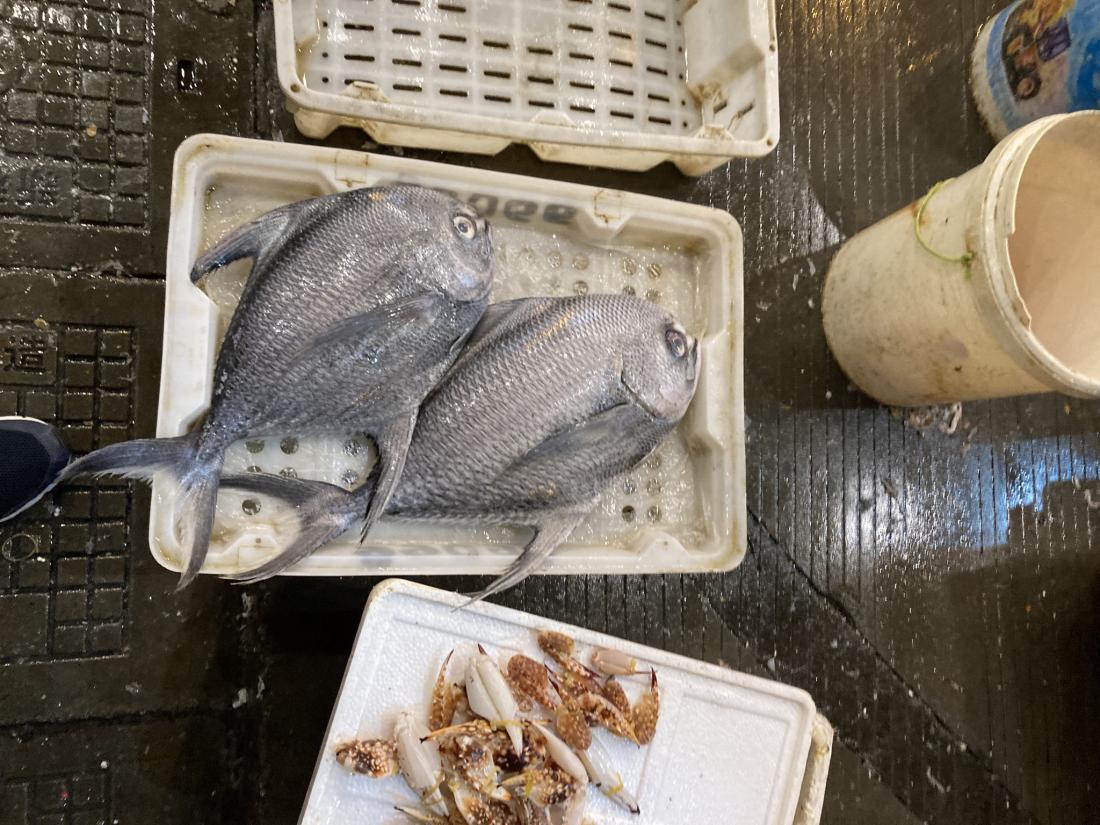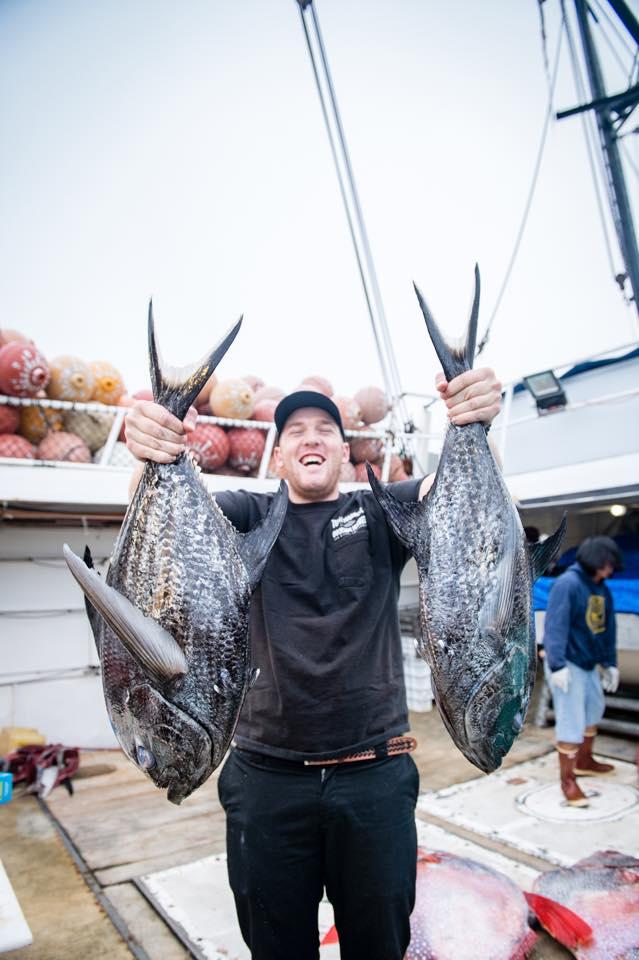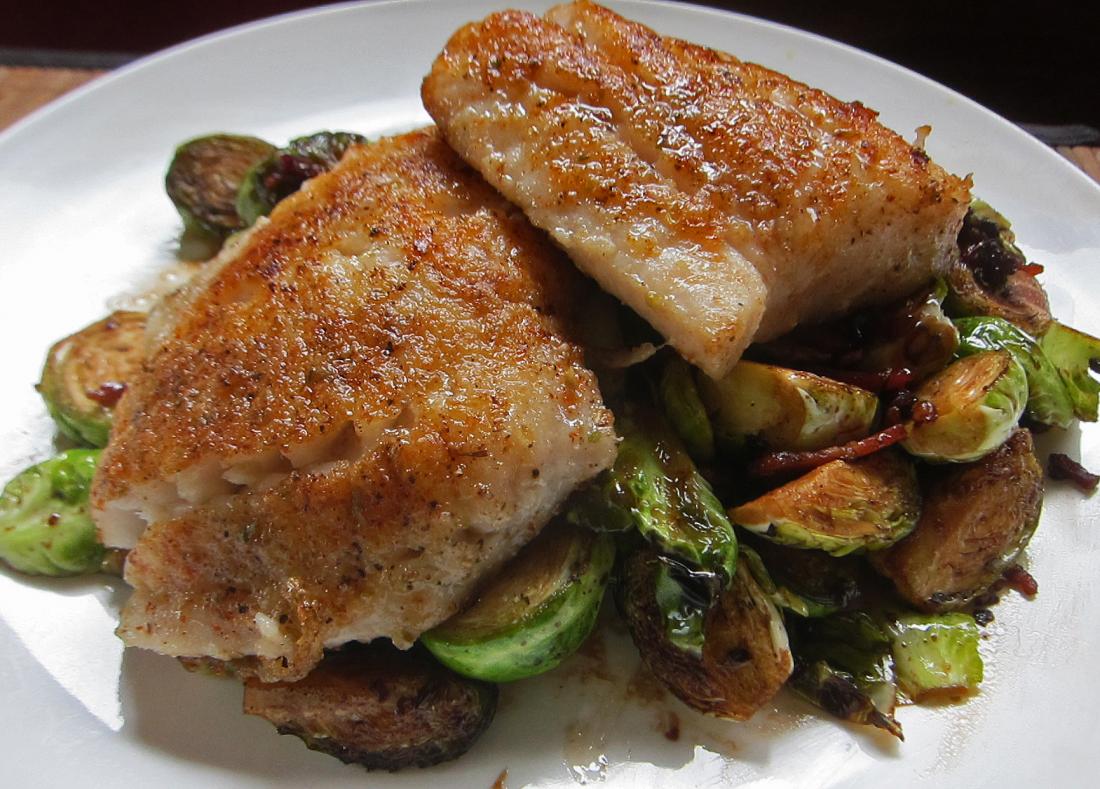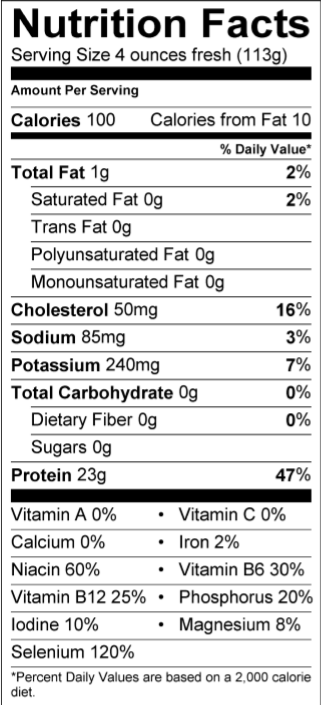Sickle Pomfret
Taractichthys steindachneri
The Science
THE SCIENCE
This fish can live up to 8 years! [5]

Taxonomic description
- Has a silvery black with forked fins, white margins on anal, caudal, and pelvic fins, large hard scales covering the whole body. [2,3]
- This fish has canine teeth that are small, curved, and set in both jaws. [4]
- Weighs between 2.2-11.3 kg (4.9-25 lbs) with an average of 5.5 kg (~12 lbs). [2]
- Maximum length of this fish is 60 cm (~2 ft). [5]
Distribution
- Found in tropical waters throughout the Pacific and Indian Oceans; in the eastern Pacific, it is found along the coast of Baja California, Mexico to Southern California; and near Hawaii. [6]
Life History
- The average lifespan for this fish is about 8 years. [5]
- Broadcast spawner, and releases eggs and sperm into the water. [5]
Habitat
- A mesopelagic species that lives at depths between 53-700 m (175-2300 ft), often close to seamounts and at shelf edges. [2]
- Feeds on a diverse group of fishes, cephalopods, tunicates, and crustaceans that occupy scattering layers, making it a mid-trophic level species. [7]
- Juveniles are preyed upon by tuna and swordfish. [4]
- Predators of adult sickle pomfret include deep-foraging bigeye, albacore tunas, swordfish, and large sharks. [7]
The Fishery
THE FISHERY
Pelagic longlining and deepwater hook-and-line are the main gear types, which also have minimal environmental impacts. [8]

Seasonal availability
- There are no well-defined seasonal trends. [2]
Regulatory and managing authority
- The fishery is overseen by NOAA fisheries and, as established by the Magnuson-Stevens Act, the Pacific Fishery Management Council through the West Coast Highly Migratory Species Fisheries Management Plan. [9]
- As established by the Marine Life Management Act, the California Department of Fish and Wildlife (CDFW) collects data on this fishery. [13]
Gear type
- Mostly caught via pelagic longlining and some deepwater hook-and-line. [8]
- High-flyer buoys are used to keep track of gear position while fishing. [10]
Status of the fishery
- Fishery mortality rates are unknown due to lack of assessment; population abundance is also generally unknown. [5]
- There are mixed views on sickle pomfret's vulnerability to fishing: there is some concern over a moderate level of vulnerability to fishing but it has also shown to be resilient towards fishing pressure due to its sexual development strategy and the population is thought to be increasing over a generational timescale, although there is little information to support this. [5]
- Further investigation on this species' life history and ecology is needed in regards to concerns over the sustainability of current removal rates with respect to recruitment. Investigation is currently being prompted by the Western Pacific Regional Fisheries Management Council, in coordination with Pacific Islands Fisheries Science Center. [6]
- Increasingly present within longline sets since the 1950s due to top-down control reducing the number of its predators. [7]
Potential ecosystem impacts
- Fishing for this species has no impact on seafloor habitats. [8]
- Longlining poses a risk to sea turtles that are attracted to light-sticks and get hooked or entangled then drown. [10]
- Use of circle hooks (with a smaller opening), minimizing soak times, limiting mainline length, and following safe handling and releasing protocols reduces the likelihood of bycatch. [10]
The Seafood
THE SEAFOOD
This fish has many names: "Monchong" by Japanese Hawaiians, "Mukau" by native Hawaiians, and "Tristón Segador" in Mexico. [4,11]


Edible portions
- Typically only the fillets are eaten.
Description of meat
- Has a firm texture with moderate flavor. [2]
- Meat is characterized by large flakes and a pink-white color. [12]
Culinary uses
- Has a high oil content, which makes it good for grilling, broiling, baking, sauteing, and also in sushi. [2]
- For a monchong with black garlic citrus butter sauce recipe, visit Catalina OP. [14]
- For a monchong in coconut cream spinach sauce recipe, visit Kahaki Kitchen. [15]
Nutritional information
- Good source of lean protein, niacin, vitamin B6, vitamin B12, phosphorus, selenium, and iodine. [2]
Toxicity report
- Not vulnerable to any particular toxins.
Seasonal availability
- No well-defined seasonal trends, and are only sold in small quantities since the species is not typically targeted by fishermen. [2]
References
[1] NOAA Fisheries. n.d. Fishery Ecosystem Plan for Pelagic Fisheries of the Western Pacific. Web. https://www.fisheries.noaa.gov/management-plan/fishery-ecosystem-plan-pelagic-fisheries-western-pacific. Accessed 14 Sept 2020.
[2] Hawaii Seafood. 2015. Sickle Pomfret (Monchong). Web. https://www.hawaii-seafood.org/wild-hawaii-fish/sickle-pomfret-monchong/. Accessed: 28 January 2019
[3] Hawaii Seafood Council. 2015. Monchong Sickle Pomfret (Taractichthys steindachneri) Web. http://hawaii-seafood.org/uploads/species%20pdfs/12-Hawaii%20Sickle%20P…. Accessed: 28 January 2019
[4] Snow, J. 2019. Mexico- Fish, Birds, Crabs , Marine Life, Shells, and Terrestrial Life. Web. https://www.mexican-fish.com/sickle-pomfret/. Accessed: 5 February 2019
[5] Seafood Watch Consulting Researcher. 2016. Monterey Bay Aquarium Seafood Watch Web. https://www.seafoodwatch.org/-/m/sfw/pdf/reports/p/mba_seafoodwatch_mah…. Accessed: 5 February 2019
[6] Department of Commerce National Marine Fisheries Service West Coast Region. 2019. Programmatic Environmental Assessment: Commercial Fishing for Tropical Tuna in the Eastern Pacific Ocean. Web. https://www.westcoast.fisheries.noaa.gov/publications/nepa/HMS/2.22.201…. Accessed: 29 January 2019.
[7] Polovina, J., Abecassis, M., Howell, E., Woodworth, P. Increases in the relative abundance of mid-trophic level fishes, concurrent with declines in apex predators in the subtropical North Pacific, 1996-2006. Web. https://spo.nmfs.noaa.gov/sites/default/files/pdf-content/2009/1074/pol…. Accessed: 28 January 2019.
[8] Monterey Bay Aquarium Seafood Watch. 1999-2019. Pomfret Recommendations. Web. https://www.seafoodwatch.org/seafood-recommendations/groups/pomfret?o=1…. Accessed: 28 January 2019.
[9] Pacific Fishery Management Council. n.d. Highly migratory species. Web. https://www.pcouncil.org/managed_fishery/highly-migratory-species/. Accessed 14 Sept 2020.
[10] NOAA Fisheries Office of Protected Resources. 2017. Fishing Gear: Pelagic Longlines. Web. https://www.fisheries.noaa.gov/national/bycatch/fishing-gear-pelagic-lo…. Accessed: 29 January 2019.
[11] Hawaii Seafood. 2015. Longline Fishing. Web. https://www.hawaii-seafood.org/hawaii-fishing-industry/longline-fishing/. Accessed: 28 January 2019.
[12] Chef's Resources. Monchong. Web. https://www.chefs-resources.com/seafood/finfish/monchong/. Accessed: 7 Apr 2020.
[13] Marine Life Management Act. n.d. California Department of Fish and Wildlife. Web. https://wildlife.ca.gov/Conservation/Marine/MLMA. Accessed 24 August 2020.
[14] Bonilla, J. Catalina Offshore Products. 2020. Monchong with Black Garlic Citrus Butter Sauce. Web. https://www.catalinaop.com/recipe/monchong-with-black-garlic-citrus-but…. Accessed 3 February 2021.
[15] D. Kahakai Kitchen. 2009. Monchong in a Coconut Cream Spinach Sauce. Web. https://kahakaikitchen.blogspot.com/2009/05/mongchong-in-coconut-cream-…. Accessed 3 February 2021.
[16] Shimada, A. flickr. 2015. fis01170. Digital image. Web. https://flickr.com/photos/noaaphotolib/28066510502. Accessed 25 February 2021.
[17] Chen, C.H. iNaturalist. 2020. Digital image. Web. https://www.inaturalist.org/photos/104986814. Accessed 25 February 2021.
[18] Tuna Harbor Dockside Market. Facebook. 2018. Digital image. Web. https://www.facebook.com/thdocksidemarket/photos/2190303700998901. Accessed 25 February 2021.
[19] K, K. flickr. 2015. Monchong with Balsalmic Brussel Sprouts. Digital image. Web. https://flickr.com/photos/mmm-yoso/24163556719. Accessed 25 February 2021.



